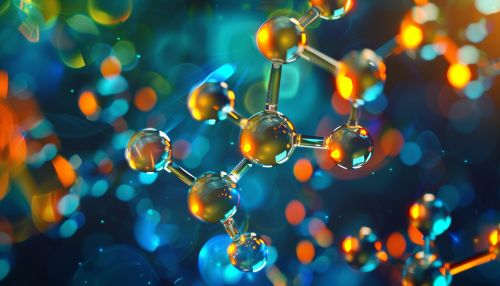Fluorophore
Introduction
A fluorophore, also known as a fluorescent dye or simply a dye, is a chemical compound that can re-emit light upon light excitation. Fluorophores are notably used in various fields such as biochemistry, medicine, and material science due to their unique optical properties.


Structure and Properties
The structure of a fluorophore is characterized by a series of alternating single and double bonds, also known as a conjugated system. This system allows for the delocalization of pi electrons, which is crucial for the absorption and emission of light. The exact wavelengths of light absorbed and emitted by a fluorophore are determined by the specific configuration of its conjugated system.
Fluorophores can be classified into two categories: intrinsic and extrinsic. Intrinsic fluorophores are naturally occurring compounds that exhibit fluorescence, such as certain proteins and vitamins. Extrinsic fluorophores, on the other hand, are synthetic compounds that are intentionally introduced into a system to achieve fluorescence.
Fluorescence Mechanism
The fluorescence mechanism of a fluorophore involves several steps. First, the fluorophore absorbs a photon of light, which excites an electron from its ground state to an excited state. This process is known as absorption. The excited electron then returns to its ground state, releasing the absorbed energy in the form of emitted light. This emission of light is what we perceive as fluorescence.
The difference in energy between the absorbed and emitted light is known as the Stokes shift. The Stokes shift is a key property of fluorophores, as it allows for the separation of the excitation and emission wavelengths, making it possible to selectively detect the fluorescence signal.
Applications
Fluorophores have a wide range of applications, particularly in the field of biochemistry. They are commonly used as labels or markers in various types of biological assays and experiments. For instance, they can be attached to antibodies in immunofluorescence assays, enabling the visualization of specific proteins or other molecules within a cell or tissue.
In medicine, fluorophores are used in diagnostic imaging techniques such as fluorescence in situ hybridization (FISH) and fluorescence-guided surgery. These techniques rely on the specific binding of fluorophores to certain biological targets, allowing for their precise localization and visualization.
In material science, fluorophores are used in the development of advanced materials with unique optical properties. For example, they can be incorporated into polymers to create fluorescent polymers, which have potential applications in areas such as optoelectronics and sensing.
